Why are researchers punching into people's skin if they are on a quest for knowledge about the brain? What does the birth of new brain cells do for memory? Plus can a 'tumour paint' be developed to help beat brain cancer? And can we shed those post Christmas extra inches by doing difficult maths problems, instead of hitting the treadmill?
In this episode
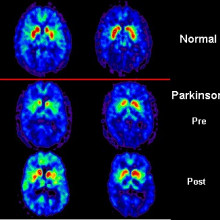
01:04 - What is Parkinson's?
What is Parkinson's?
with Dr James Rowe, Cambridge University
Kick-starting the programme, I went in search of answers about Parkinson's disease. First up, I wanted to get some idea of how many people it affects and how.
James - Yes, hello. I'm James Rowe. I'm a Consultant Neurologist at Addenbrooke's Hospital and I work with the Cambridge University on some of the research studies in Parkinson's disease and related disorders.
Well, Parkinson's is diverse and challenging. It's not just because it affects up to 100,000 people in the UK, but because of the range of problems it can cause. Many people will be familiar with the idea that it causes a tremor and slowness and stiffness, but not everyone will be aware it causes many other problems - what we call non-motor symptoms. These include sleep problems, affecting mood - of anxiety and depression, pain even, and many other problems. Even constipation is remarkably common too so, a wide range of symptoms.
Many people, even quite early than others have difficulty 
Hannah - So, this highly prevalent disorder, most famously now affecting Michael J. Fox is known to have a biological cause, this dying off of the dopamine nerve cells. We can treat it by giving patients L-Dopa or similar to replace some of the lacking chemical messenger dopamine and alleviating some of the symptoms. But in the main, this only helps mask the symptoms for short amount of time. Researchers are hoping to improve available treatments by coming up with clever new techniques to gain a much better understanding of the disorder.
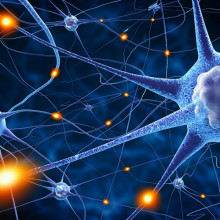
02:47 - From Skin Cells to Brain Cells
From Skin Cells to Brain Cells
with Richard Wade-Martins, University of Oxford
Parkinson’s is a highly prevalent disorder, most famously now affecting Michael J. Fox. It is known to have a biological cause, this dying off of the dopamine nerve cells. We can treat it by giving patients L-Dopa to replace some of the lacking chemical messenger dopamine and alleviating some of the symptoms. But in the main, this only helps mask the symptoms for short amount of time. Researchers are hoping to improve available treatments by coming up with clever new techniques to gain a much better understanding of the disorder. I visited Oxford to find out more....
Richard - My name is Richard Wade-Martins. I'm a Lecturer here at the University of Oxford and I also head the recently formed Oxford Parkinson's Disease Centre.
The critical thing that we really don’t understand about Parkinson's is, of all the billions of neurons that are present in your brain, why is it those that make dopamine that die off? It’s one of the major unanswered questions in the disease and one of the things we’re focusing here in my laboratory.
What we’re able to do now for the first time is make neurons in the laboratory from patients and from controls. Now how do we do that? You can't drill a hole in somebody’s head and take out some neurons to grow in the dish. People want to keep hold of their neurons. They're too precious. So, what we can do instead is to use new technologies of stem cells.
So, what we’ve been able to do in the centre is to take a skin biopsy from an individual, either a Parkinson's patient or a control, take that skin biopsy using a hole punch that’s about the same size as a hole you might punch out in a piece of A4 paper. So you take that skin punch, take that back to the laboratory, chop it up into little bits and those bits of skin fall down to the bottom of your dish and you put a growth medium on top of there, a sort of liquid that contains all these things that cells need to be happy and grow. And a type of cell called a fibroblast will start to grow out from the skin culture. So after about 2 or 3 weeks, the cells have grown out from your skin sample and you now have a culture of growing cells from either patient or a control.
What you then do is you can use various genetic tricks if you like. You can add to these fibroblasts a number of different cellular reprograming factor as we call them – that are able to turn back the clock if you like, on these fibroblasts. You're able to genetically persuade the fibroblasts they're not skin cells anymore, but they're stem cells. And these cells will now grow in your dish as stem cells. They're called induced pluripotent stem cells. They're induced because you’ve turned them into stem cells and they're pluripotent. They will go on to become any cell type you like.
So, once you’ve got stem cells from your patients, you can now turn them into a cell type that you wish to study. So, if we’re in interested for example in cardiovascular disease, we’d turn them into cells of the heart and study that. So, what we do in the lab, we’re interested in dopamine neurons, how they work, and how they die so we turn these stem cells into dopamine neurons.
Hannah - So, this exciting new technology of turning skin cells into dopamine nerve cells provides a method by which to investigate how the cells of patients with Parkinson's differ to other people’s and why they're more susceptible to dying in the first place. The idea being, that once you understand how these cells die in the dish, you can first of all screen for new molecules that may help them survive and put us on the road to developing, for the first time, therapies in Parkinson's that can stop the cells dying rather than just supplement the dopamine that’s already lost. Richard explains how they're using this technique in the lab to do this.
Richard - So, the dopamine neurons in an individual and even the patient will work quite happily for 30, 40 or 50 years and then they’ll start dying. My PhD students and Postdocs don’t want to work in the lab growing these neurons for 50 years, so we have to try and understand what might be changing much earlier.
So, when dopamine neurons die in a patient, they accumulate aggregates, ‘gluggy’ bits of proteins if you like, called Lewy bodies and these Lewy bodies form as the neurons die over decades. We’re not working on that timescale, so we have to better understand what are the very earliest changes that may occur in these neurons to give us the first clue as to how they're starting to function differently. And we’re starting to understand and investigate aspects of neuron biology that may be different in patients rather the controls.
So, there's various things we could study. We can study how they make dopamine, how they release dopamine. We can study other aspects of cell biology important for neurons. So for example, neurons don’t divide. Neurons have to very tightly regulate the material in their cell and to recycle it, and reuse it. And so, we’re starting to investigate differences that may occur in these neurons from a Parkinson's patient to mean they're not as able to recycle and reuse their cellular components as well as a healthy neuron might.
Another difference there maybe is the way the neurons make and generate, and supply energy. So, there's a type of component of a cell called a mitochondrion. That’s the energy factory. It makes energy and there's been a suspicion for a long time that the mitochondria of a Parkinson's patient just might not be quite as good, so we’re starting to study a whole range of aspects of neuron biology in patients, in control cell lines, to better understand why those neurons die. And only when you understand how they die can you think how you might protect them.
Hannah - So these skin cells that have been turned into nerve cells, could they be used to help identify people who are at high risk of developing Parkinson's decades down the line?
Richard - So, that’s a great idea. So, the exciting aspect about these stem cells and the neurons that you make is that they're unique to the patient that you’ve made them from. So yes, we would be able to try and correlate perhaps proteins secreted from these neurons and how that might be different proteins secreted from a patient neuron compared to a control neuron.

08:47 - How does Parkinson's affect you?
How does Parkinson's affect you?
with Alan Cameron
To find out what somebody affected by the disorder actually thinks of Martin’s research on turning skin cells to brain cells and investigating Parkinson’s Disease, and to discover how Parkinson's affects their life, I took to the phone…
Alan - My name is Alan Cameron and I was diagnosed with Parkinson's in late 2004, so I've been living with the condition for around 8 years now. The kind of thing you’ve describe sounds extremely useful – because it sounds like something that’s practical, it is within reach that is perhaps heading towards a cure or meaningful protective effects to slow down the underlying progress of the condition.
Hannah - I also wanted to know more about the symptoms of the disorder and how it’s affected Allan so far.
Alan - Parkinson's is first and foremost known as a movement disorder and the symptoms that I've experienced are primarily a problem with dexterity which has been an issue for my job because I spend a lot of time typing.
As well as a movement disorder, it commonly brings depression, and I've experienced that also. In many ways, it has been a bigger parts of the impact to my work than the movement disorder itself and it’s well-known, but it’s currently incurable, and it’s a progressive condition. With medication, we can address some of the symptoms but we don’t address the underlying progress of the condition. I'm lucky in that – for me, the progression has been quite slow. Parkinson's is known as kind of a "designer disease". It affects different people very differently.
Drugs are available which are very effective addressing the symptoms. So what you will tend to find is you'll respond to the drugs slowly over time, but you do slowly, day by day, start to notice that different things become more difficult. So my dexterity is primarily fixed on the left side, so changing gear or getting my arm into a sleeve is sometimes difficult, and I've tended to like shirts with cufflinks because they can become just a little bit too much fun...

10:59 - How can Parkinson's affect Mood?
How can Parkinson's affect Mood?
with Dr James Rowe, Cambridge University
In order to find out more about the mood symptoms that Alan mentioned and the progression of Parkinson's disease, I return to speak with neurologist Dr. James Rowe from Cambridge University...
James - Depression, and the other mood problem of anxiety, are extremely common with Parkinson's disease. There are a lot of questions unanswered. The first is that, is it more common than you would expect in people of a similar age? Is the depression a reaction in some people against having what is essentially bad news? Is it a reaction to having a restriction on your lifestyle, in your expectations of a happy and active retirement? Or could it be something more that the illness itself is leading to depression? One of the challenges we face is it’s not clear whether the usual approach is the treatment of depression that you might take in younger adults without Parkinson's disease, whether they work as well in patients with Parkinson's disease.
Hannah - Can you tell us a little bit about the research that’s going on here in Cambridge in the area of Parkinson's?
James - So that with a very active research clinic here, we’re treating patients really from Cambridgeshire and surrounding counties, and it covers a diverse range of project. One of them is to really try and understand what the first symptoms of Parkinson's disease are, how it first affects the brain, with or within months of your symptoms coming on. On that basis, we also want to try and understand what predicts how your Parkinson's disease would evolve. Will you be someone who lives with it, Parkinson's disease, and remain fully active and independent over 10 or 15 years, or will you be someone who’ll get an early and aggressive dementia perhaps over the first couple of years? Both of these things can happen.
What we don’t yet understand is that is predicting and understanding why one individual takes route or the other so a lot of research on to that. That’s linked to work on both treating some of the symptoms of Parkinson's disease and our emphasis is on treating the thinking and memory problems that can come with Parkinson's disease what are called cognition or enhancing cognition. The other aspect is looking at treatments that might alter the course of the illness itself, fundamentally alter the course of the illness.
What's increasingly clear and the focus for our research is that other chemicals in the brain that can be affected by Parkinson's disease, so two in particular. We focus on one called serotonin that people might have heard of in connection with depression and mood anxiety. Another chemical is noradrenalin, a brain’s version of adrenalin. That’s also very important for clear thinking and flexibility.
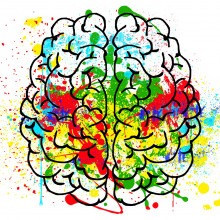
13:23 - Volunteering for Parkinson’s Research Studies
Volunteering for Parkinson’s Research Studies
with Alan Cameron, Dr Kieren Breen, Parkinson's UK
Hannah - Alan Cameron, who was diagnosed with Parkinson’s Disease eight years ago has since this been involved in a number of research studies as a volunteer. I asked him more about the experience. Was it empowering?
Alan - I think it’s recognized as a kind of therapeutic effect of volunteering. It gives you some way of feeling that you can take the fight to the condition rather than just sit and spectate.
Hannah - So, how does one go about volunteering for such research studies? I called up the Director of Research and Innovation at the Charity Parkinson's UK.
Kieran - My name is Kieran Breen. There are a number of ways which this can be done. One of these is by taking part in the clinical trial. This could be for example, testing out a new drug to see it’s better than an existing drug, or it could be using some other sorts of treatments such as physiotherapy, or other sorts of therapies that don’t involve the use of medicines.
And another way in which we are encouraging people to get involved is by forming partnerships with researchers. When a researcher wants to carry out a trial that will ultimately help people with Parkinson's, it’s important that they get the views of the people who have the condition at an early stage. We want to make sure that at the end of the research, that the findings will actually be meaningful for somebody affected by the condition.
Hannah - And in terms of people with Parkinson's volunteering for these different types of studies, how long should they expect to be donating their time for this type of activity?
Kieran - This may involve 1 hour per month. It may involve 1 hour per day. There are many different types of projects and there are many different ways in which people can get involved. The part we’ve got to build is to advice people with a wide variety of different areas of research and different ways in which you can get involve in research, and then you can make the decision as to how or which you want to get involved according to what is required, and according to the time that you have available.
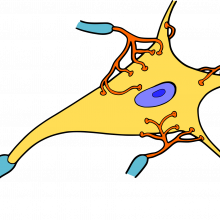
15:53 - Newborn neurones and newborn babies
Newborn neurones and newborn babies
It's time to take a look at the top stories from this month, I join PhD student David Weston from Cambridge University. He's been busy shifting through neuroscience research and comes up with his three favourite papers from the month....
David - So the first paper I would like to talk about has to do with memory. Now scientists have long thought that the birth of new brain cells within an area of the brain called the hippocampus, is really important for memory function. But exactly how these new brain cells work and how they integrate into the brain is something that researchers having been working hard over. Now a group of scientists based at the State University of New York in the USA have used a combination of viral and optogenetic techniques to find out just how important the growth of new brain cells within the hippocampus really is.
Hannah - So these scientists want to find out why these  new-born cells are so important. How did they go about finding more about these cells?
new-born cells are so important. How did they go about finding more about these cells?
David - Well they used a virus to deliver light-sensitive genes into new-born cells within the hippocampi of adult mice. Now this virus infects only the new-born cells and gives them these genes that produce proteins sensitive to light. The researchers were then able to control these cells by shining lights of different colours onto the cells to activate or deactivate them.
Hannah - So just by shining different coloured lights they could control whether these new-born cells were activated or deactivated. What did they do next?
David - Well what they wanted to do was see how important new cells within the hippocampus are for memory function. So first they showed that if they activated these new-born cells they could enhance synaptic plasticity, which is widely believed to correlate with better memory function. They then tried deactivating these cells and they found that the mice performed much worse is some tests of memory function.
Hannah - So the new-born cells definitely had something to do with memory formation.
David - Yes, but interestingly the effects of manipulating the new-born cells were only seen when the cells were 4 weeks of age, not when they were older or younger. These results hint at the idea that new cells within the hippocampus are able to exert their memory-enhancing effects only at early stages of their development.
Hannah - So this means that the timing of when new cells are born could play an important role in memory function and behaviour. Fascinating! What's your next paper?
David - The second paper I want to talk about also has something to do with timing. It's about how much of your life is affected by your time as a foetus. There is an increasing amount of evidence suggesting that many aspects of your adult health can be traced back to your aspects of your foetal environment and importantly your birth weight.
Hannah - So your weight at the time of you birth might be linked to things to do with your brain? How did the scientists in the study work that out?
 David - So this group of scientists working across both Norway and the USA collected data from 628 adults, adolescents and children, measuring things like the thickness of their cerebral cortex, their brain volume and the surface area of their brain using scans taken in an MRI machine. They found that as birth weight increased the total brain size as an adult was much larger.
David - So this group of scientists working across both Norway and the USA collected data from 628 adults, adolescents and children, measuring things like the thickness of their cerebral cortex, their brain volume and the surface area of their brain using scans taken in an MRI machine. They found that as birth weight increased the total brain size as an adult was much larger.
Hannah - So birth weight influences brain size, but why is this important?
David - Well low birth weight can influence your likelihood of getting some cognitive disorder such as autism, where you are five times more likely to get the disease. And while this study doesn't make any specific links between birth weight and disease it does show that brain development is heavily influenced by factors surrounding your birth.
Hannah - What's your final paper?
David - So the final paper this time is about a new drug that could help fight the effects of Alzheimer's disease. A collaboration between groups in Japan and Canada have taken an anti-diabetes drug and tested its ability to reverse some of the deleterious effects of the disease.
Hannah - How can a drug designed for diabetes treatment help with Alzheimer's Disease?
David - Well this drug, AC253, was originally part of a drug trial looking for potential targets for diabetes. One of these targets is the amylin protein, which is similar to the toxic amyloid protein, that builds up in the brain and is a key target for Alzheimer's Disease. This team had already shown that AC253 could block the formation of toxic amyloid protein and in this paper they showed that treating brain cells with this drug could reverse some of the effects of Alzheimer's.
Hannah - So these experiments were performed on cells in petri dishes, but how close could this be to a treatment for Alzheimer's disease in humans?
David - Well the authors themselves seemed quite optimistic about the prospect for a drug treatment. These results are encouraging because they show a reversal of Alzheimer's effects, which might mean things like being able to reverse a loss of memory!

21:14 - All ears, brown eyes and glowing cancer
All ears, brown eyes and glowing cancer
Listen Up, Restoring hearing!
Repetitively listening to loud music, getting old, and even certain drugs can cause the hair cells in your inner ear to stop working. This can result in irreversible hearing problems. But Edge and colleagues at Harvard Medical School have used a drug to trick existing cells in the ear to follow a different path and become new hair cells, resulting in the partial recovery of hearing.
This study, published in Neuron was conducted on mice but may pave the way for a new treatment for hearing problems in humans.
Brown eyed people more trustworthy than blue
Kleisner and colleagues from Charles University, Czech Republic wanted to know what makes for a most trustworthy face!So, the researchers presented 250 volunteers with 80 photos of different men and women, asking them to rate trustworthiness. Results were analysed. And the brown eyes have it!
Both men and women with brown eyes were perceived as more trustworthy than those with blue. They followed the study with a bit of photo shopping, altering the eye colours, and found that it was not the eye colour per say that affected trustworthiness but more the eye shape and features associated with brown eyes. That study published in PLoS One.
Scorpion venom paves the way for better brain tumour treatment
A compound inspired by scorpion venom could help neurosurgeons tell apart cancerous from healthy brain tissue.
Traditionally surgeons have just felt their way around the brain when trying to remove just the cancerous tissue, which when it goes wrong, can lead to mental disability.
But a scorpion toxin has somehow evolved to that bind specifically to cancerous brain cells. Now Jim Olson at Seattle Children's Hospital working with the Company Blaze Bioscience, have linked the toxin to a molecule so that it glows, forming a "tumor paint". Clinical trials start this year.

Maths to lose weight?
We tackle some of your neuroscience questions. I joined Professor Simon Laughlin from Cambridge University who's been flexing his brain power to answer your questions about the brain.
Sean Hoskins got in touch via Facebook asking: "Can you burn off a hot fudge sundae by doing a difficult math problem instead of hitting the treadmill?"
Simon - The answer is definitely no. So, scientists wanted to measure oxygen consumption of the human brain, and test whether the brain was like a muscle - that if you worked it harder, it had to use more energy. And so, they got people to sit down and solve difficult math problems and measured their energy consumption of the brain. And what they found was that there was no detectable change.
So, doing difficult math problems will certainly not enable you to lose weight. The best thing you can use your brain for, is to design a good exercise regime and a diet.
Hannah - Thank you, Simon. I suppose I should be hitting the treadmill then in order to shed those Christmas pounds.
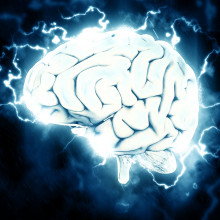
Do we only use 10% of our brains?
Professor Simon Laughlin from Cambridge University flexes his brain power to answer this...
Simon - The answer to this question is really contained in the answer to the last question. That your brain is ticking over all of the time and when you actually engage in a specific task, you do something specific, a small path of the brain that’s concerned with doing that task becomes more active, starts signalling more vigorously to process the information that’s needed to solve that problem or to stop you falling over or whatever. And that is why that because it’s a small fraction that gets switched into action to do something specific, that’s why people could not measure a big change in energy consumption when the brain engaged actively in some specific mental work.
What this means is that there are large parts of your brain which are just ticking over, and they're sitting there, ready to engage in something when they need to. So, you might ask the question, “Well, could I in fact have more of these parts of the brain switched on and do incredible multitasking?” And the answer is, no. When these small regions of the brain become more active to do a specific piece of mental work, their signalling rates go up by a factor of about 10.
And some work that David Attwell and I did a few years ago – Dave is Professor of Neuroscience at UCL in London – work that we did a few years ago shows that if you were to increase the activity of every neuron in the brain ten-fold, then your brain would be using more energy per second per gram of brain than an Olympic sprinter, making a world record attempt.
Hannah - So, in that case, is it true that you can only use 10% of your brain by concentrating on one particular task any time or do you think you could recruit maybe 25, 50% of your brain to be much more energetically active and engaged in many different tasks or is your brain somehow got some capacity to stop that from happening?
Simon - Well, it mainly comes from – the capacity is really in-built into the architecture of the brain. The architecture of the brain is that it’s not a general purpose computer that uses a small set of circuits to do everything. It’s a specialised computer which has a specific set of circuits for every task and because of that, when it’s able to deal with everything, but only a small fraction of the brain circuits will be engaged in that at any one time.

How does the brain interpret info?
Professor Simon Laughlin of Cambridge University tackles this...
Simon - The reason that you're able to detect hot and cold, and touch and so on, and tell the difference between those different types of energy which are impinging on the surface of your body, is that in your skin, you have sensor receptor cells which are sensitive specifically to heating, specifically to cooling, to particular types of touch, fast, sharp, shocks, deep, stretches, and so on.
And so, those sensory receptors in the periphery already sort out the different types of stimulus that are impinging on your skin and each one of those sensory receptors sends an axon or wire to the brain and it sends it to a part of the brain that’s specifically concerned with hot or cold, or with different types of touch.
So, the information is being – what we call in neuroscience – "line labelled". If you're sitting in the ground, you see an electrical signal coming along a particular line and you know that that line comes from a receptor which only responds when the temperature of the skin goes up then you know there's an increase in the signalling, electrical signals coming in means that that part of the skin is getting warmer.
So, how is this information encoded? The answer is that it’s encoded by electronic pulses. So they're very brief, rapid, up and down changes of electrical potential that lasts for 1/1000th of a second. Now, it’s tempting to say that these are digital because a digital computer works by making electrical pulses which from being down, which is zero to up which is being 1.
But in fact, the brain is not a digital computer. It’s not processing information using digital logic. These pulses are coding the strength of the stimuli, how intense they are by the frequency with which they occur, i.e. how many pulses are there per second? And when the rate of pulses per second goes up, the brain generally interprets this as the intensity of the stimulus becoming stronger.










Comments
Add a comment